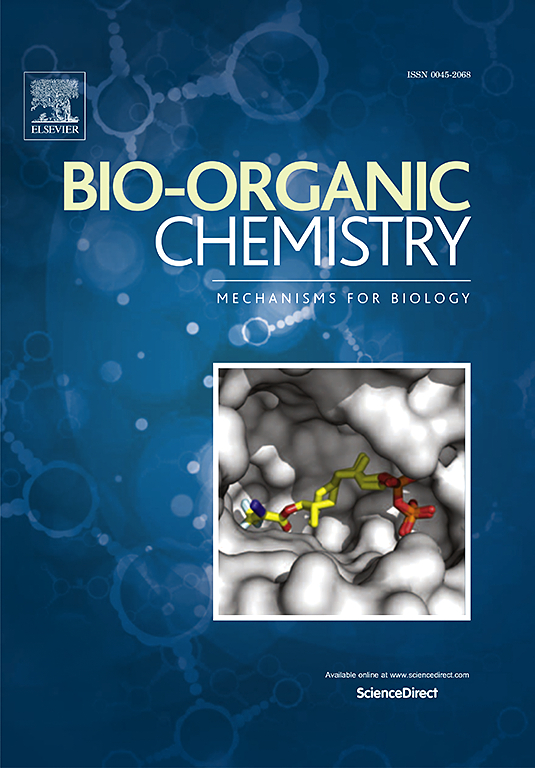Exploring 1,2,3-triazole-Schiff’s base hybrids as innovative EGFR inhibitors for the treatment of breast cancer: In vitro and in silico study
IF 4.5
2区 医学
Q1 BIOCHEMISTRY & MOLECULAR BIOLOGY
引用次数: 0
Abstract
EGFR inhibitors are a class of targeted therapies utilized in the management of certain tumor kinds such as NSCLC and breast cancer. Series of 1,2,3-triazole-Schiff’s base hybrids were designed, synthesized, and estimated for their antitumor effect toward breast cancer cells, MCF-7 and MDA-MB-231. The safety and selectivity of the new compounds were tested using normal cell (WI-38). Analogs 4a, 4b, and 5f demonstrated significant antitumor effects toward both MCF-7 and MDA-MB-231 with IC50 range of 5.61–18.01 µM in comparison to Doxorubicin (6.72 µM). Moreover, they proved considerable selectivity toward the tested cancer cells (SI values of 4.36–5.33). The superior compounds were investigated for EGFR inhibition where compounds 4b and 5f showed the highest EGFR inhibition effect with IC50 equal 0.16 and 0.15 µM, respectively utilizing Gefitinib as reference (IC50 = 0.081 µM). Further mechanistic studies for hybrid 5f in MDA-MB-231 cells, exhibited cell cycle arrest at G2/M phase by 29.85 % that was accompanied by the elevation of apoptosis percent by 48-fold more than the control. The apoptosis studies indicated that hybrid 5f was able to upregulate Bax (9.43 folds) while downregulate Bcl-2 (0.27) with substantial remarkable elevation of Bax/Bcl-2 ratio (35:1). Furthermore, it upregulated both caspases 8 and 9 by 2.93 and 6.54-fold, respectively. Molecular modeling studies showed the good binding affinity of compounds 4b and 5f with EGFR kinase active site explaining their potent biological effects. Drug likeness and ADMET features of compounds 4b and 5f demonstrated that they represent promising drug like candidates against breast cancer.

求助全文
约1分钟内获得全文
求助全文
来源期刊

Bioorganic Chemistry
生物-生化与分子生物学
CiteScore
9.70
自引率
3.90%
发文量
679
审稿时长
31 days
期刊介绍:
Bioorganic Chemistry publishes research that addresses biological questions at the molecular level, using organic chemistry and principles of physical organic chemistry. The scope of the journal covers a range of topics at the organic chemistry-biology interface, including: enzyme catalysis, biotransformation and enzyme inhibition; nucleic acids chemistry; medicinal chemistry; natural product chemistry, natural product synthesis and natural product biosynthesis; antimicrobial agents; lipid and peptide chemistry; biophysical chemistry; biological probes; bio-orthogonal chemistry and biomimetic chemistry.
For manuscripts dealing with synthetic bioactive compounds, the Journal requires that the molecular target of the compounds described must be known, and must be demonstrated experimentally in the manuscript. For studies involving natural products, if the molecular target is unknown, some data beyond simple cell-based toxicity studies to provide insight into the mechanism of action is required. Studies supported by molecular docking are welcome, but must be supported by experimental data. The Journal does not consider manuscripts that are purely theoretical or computational in nature.
The Journal publishes regular articles, short communications and reviews. Reviews are normally invited by Editors or Editorial Board members. Authors of unsolicited reviews should first contact an Editor or Editorial Board member to determine whether the proposed article is within the scope of the Journal.
 求助内容:
求助内容: 应助结果提醒方式:
应助结果提醒方式:


